Synagogues in Istanbul
Introduction
Synagogues in Istanbul – After the conquest of Constantinople by the Turks in 1453, many Jews continued to live in the city. In 1492, Sultan Bayezid II welcomed the Sephardi Jews, who were expelled from Spain, to the Ottoman territory, and thus the population of the Jews in Anatolia, especially in Istanbul, increased immediately. Those Jews were mostly artists, handicraftsmen, and merchants in their homeland, Spain, where they lived together with Muslims and Christians. Under Ottoman rule, they offered their knowledge and skills to their new land, dealing with medicine, typography, manufacture of firearms, textile dyeing and weaving, leather making, and copper-smithing. When we look into Ottoman archives, we learn that there were synagogues in the 15th and 16th centuries as a part of Halil Paşa Birgosu (today near Bahçekapı), the neighbor of Eminonü Balat Hacı İsa and the Tahta Minare area. According to Ottoman documents, the temple for Jews to pray was called “sinavi.” During the 17th century, many synagogues were built in the Galata area.
Etymology
The word Synagogue originates from the Greek language. “Syn” means together and “ago” means bring. “Synagogue” thus denotes the concept of “assembling together.” At the same time, synagogue can also be referred to as a “Bet ha-Tefillah (house of worship)”, a “Bet ha-Midrash (house of study)”, and a “Bet Aam or Beth Kenishta (public house or community house)”, for its different services.
Jewish Community in Istanbul
The current Turkish community is a remnant of the great influx that took place during the Spanish inquisition in 1492. Sephardic Jews (or Spanish Jews) were forced to convert to Christianity or flee their homes. Ottoman Sultan Beyazid II granted these Jews (with their European scientific and economic knowledge) to take refuge in the Ottoman Empire and allowed them to live on the banks of the Golden Horn. Also Russian Jews fleeing the pogroms in the 19th century and the Bolshevik Revolution in 1917 found refuge in Turkey. And in 1933 Atatürk invited famous scientists under threat in Nazi Germany and Austria to find shelter and settle in Turkey. Turkey also served as a safe passage for many Jews fleeing the horrors of Nazism during World War II. Remains of those days can still be seen in the Balat area along the Golden Horn and the Galata district in Beyoğlu — the centers of the Jewish community in Istanbul. Unfortunately, a series of events triggered a massive emigration of Jews from Istanbul. First there was the wealth tax (Varlık Vergisi) of 1942. Although aimed at wealthy Turks, its effect on the Jewish community was catastrophic. An estimated 30.000 Jews, unable to pay their debts, fled the country. Secondly there was the Istanbul pogrom of 6/7 September 1955 against the Greek, Jewish, and Armenian communities of Istanbul. Although more material then physical damage was done, this caused another massive emigration of these minorities, with some 10.000 more Jews fleeing Turkey. The vast majority of the Jewish community in Turkey (currently estimated at around 26.000 people) lives in Istanbul. This is only a fraction of the 500.000 Jews that once lived in Istanbul during the Ottoman Empire — a time when Jews and Christians made up 40% of Istanbul’s population. Read on for a short history about the Jewish community and an overview of notable synagogues in Istanbul.
Main Synagogues in Istanbul
Due to natural disasters such as earthquakes and fires, as well as expropriation and migration into Istanbul throughout the centuries, there are no synagogues remaining from the Classical Ottoman period. Since the 17th century, re-constructions and repairs of synagogues have been made under Ottoman architectural influence. Thus, synagogues in Istanbul have no significant architectural features, styles and typologies of their own. In general, synagogues in Istanbul have a rectangular or square shape, and most of them are made of wood and stone masonry. They are located in a courtyard or garden, which is surrounded by high walls. The Star of David motif can be seen on the entrances of courtyards. Including the following synagogues, the total number of active synagogues open for worship in Istanbul is currently 20, 17 of which are open every month of the year and three are open only summer season.
Ahrida Synagogue (15th century)
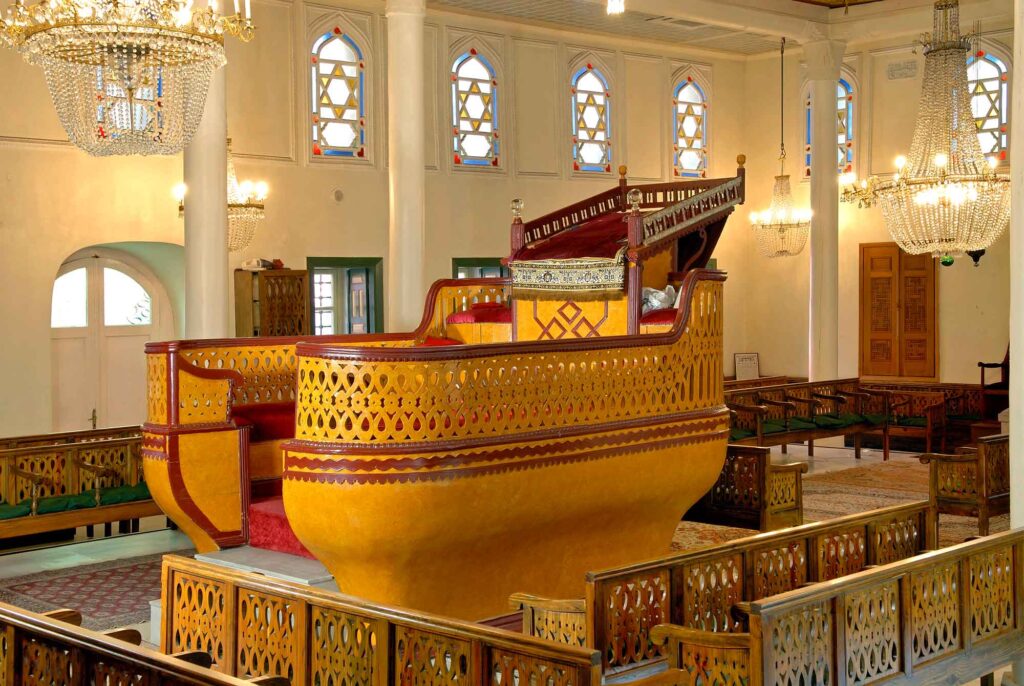
This synagogue, one of the two remaining oldest synagogues in Balat, was originally built as two separate synagogues by Romaniote Jews (Jews of the Byzantine Empire who lived in Constantinople and elsewhere long before the arrival of the Sephardim) in c. 1460, and was later used by Sephardi Jews who came from Spain via the Macedonian city of Ohrid (Ochrid). “Ahrida” is one of the two names being used by Greeks for “Ohrid.” The two groups were finally mixed, with Sephardic culture being the predominant culture now in Istanbul, so that the liturgy was being performed in the Sephardic style. The congregations were combined into one larger space (seating 500) in the 1860s. Throughout its history, this synagogue has been restored many times. After the most recent restoration, which was done in 1992 by the Quincentennial Foundation, the synagogue was open to the public for worship. The tevah (bimah) is shaped like the prow of a ship. According to legend, this structure is a fragment of Noah’s ark, or represents the boats that brought the Sephardi Jews on their journey from Spain to Istanbul.
Bakırköy Sinagogue (19th century)
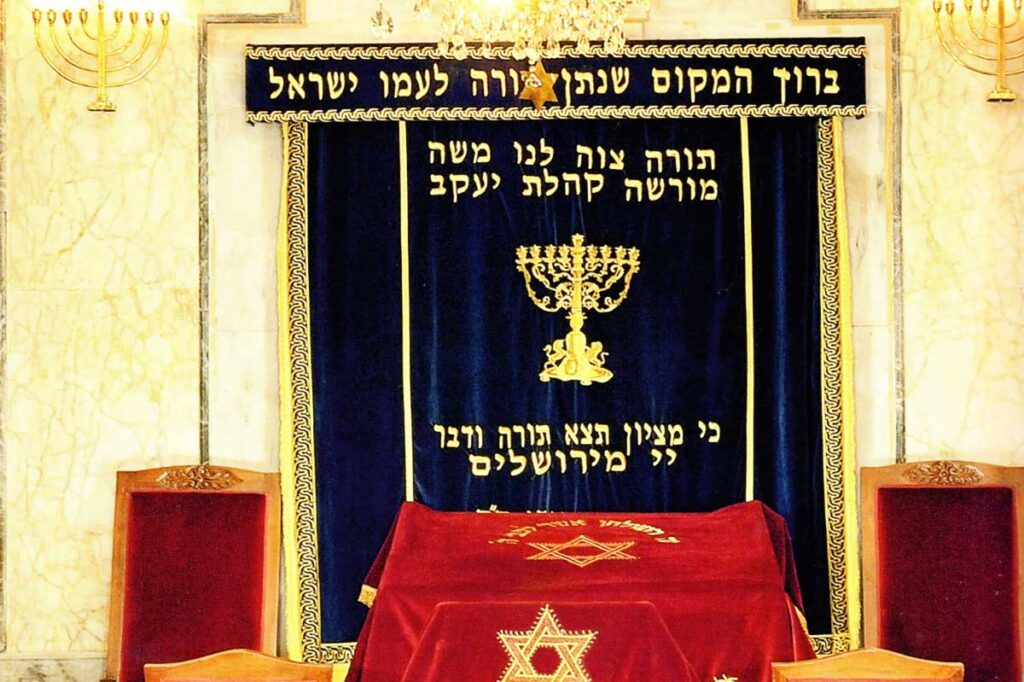
Bakırköy Synagogue is open to the Jewish community who live in the Yeşilköy, Yeşilyurt and Bakırköy districts, where Jews from Edirne settled after the end of 19th century. It was built in 1914 with the effort of Moshe Pinhas and his friend Moshe Behar Hak. During World War II, the building was offered to the Ministry of Defense and used as a military shipment center. After the war, the synagogue was returned to the Jewish community, and opened for prayer. The synagogue has been restored several times.
Bet Israel Synagogue in Osmanbey (1953)
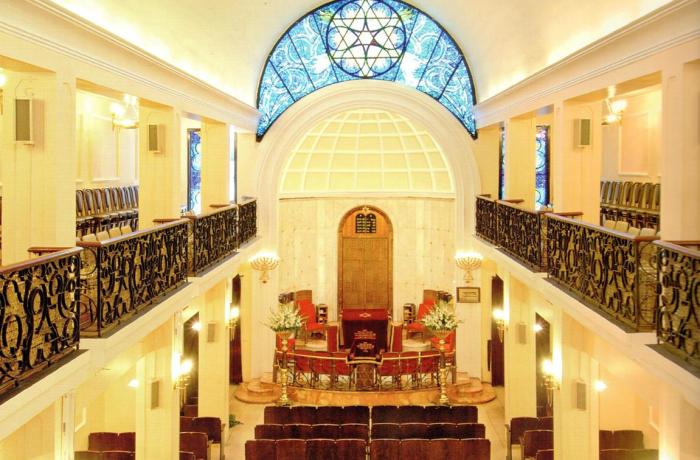
Bet Israel Synagogue is located in Şişli, Osmanbey. The synagogue was initially built in the 1920s, and enlarged to its present size in the early 1950s due to a large group of the Jewish population having moved to that area from Nazi occupied territories. After the renovation in 2004, it has been open for worship.
Bet Nissim Synagogue in Kuzguncuk (1872)
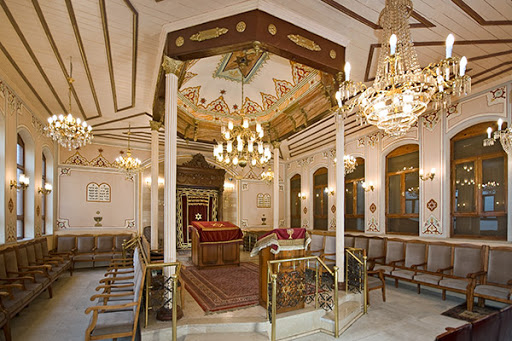
This synagogue, called “Virane” or “Kal de Ariva” (upper synagogue), was built in the 1840s in Kuzguncuk in the Asian side of Istanbul. It was restored and reopened to the Jewish community in 1994. After the most recent restoration, the synagogue was renamed as Bet Nissam, which was the name of a contributor (d. 1997) to the Jewish community in Kuzguncuk.
Bet Yaakov (Kal de Abaşo) Synagogue (1878)
Bet Yaakov Synagogue was built next to the Greek Orthodox Church in Kuzguncuk district in 1878. According to Galante, the Etz Ahayim Synagogue, which was built and burned before the present building, previously occupied that space. It is open for Shabbat services on Saturday morning.
Bet Yaakov Synagogue in Heybeliada (1956)
The Bet Yaalov Synagogue was built in 1953, due to the increase of the Jewish population in the island in the 1940s. It is open for worship during summer time.
Caddebostan Synagogue (1961)
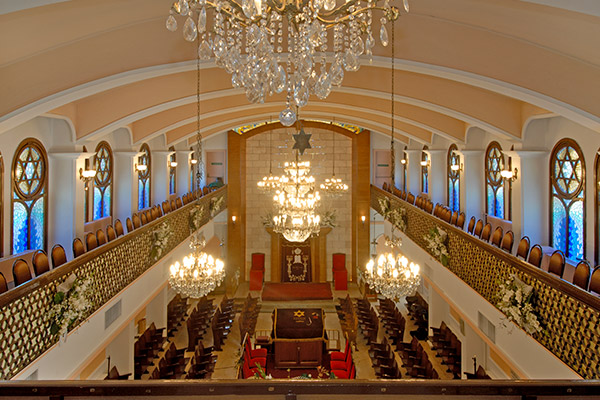
Caddebostan Synagogue was built in 1961 as a result of the increasing Jewish population in the Kadıköy district. This synagogue has the largest congregation on the Asian side of Istanbul
Etz Ahaim Synagogue in Ortaköy (1707)
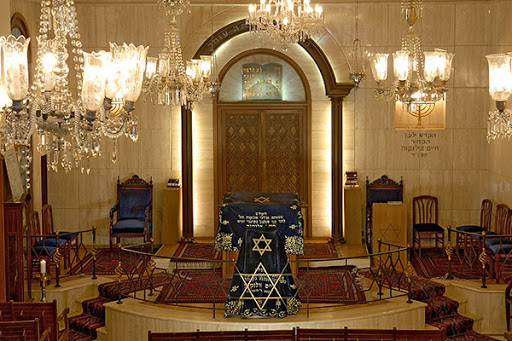
Etz Ahaim Synagogue, located in Ortaköy, was one of the synagogues whose name meant “Tree of Life.” According to an Ottoman document dated in 1707, the synagogue burned down and was restored in 1703. This synagogue burned again in 1813 and had serious damage. In 1825, the synagogue was restored with the financial support of the Kamond Family. After it totally burned down in 1941, only the marble Aron-ha-Kodesh remained. The synagogue was rebuilt again in 1977. Since 1994, it has been opened to the Jewish community for worship.
Maalem Synagogue in Hasköy (1960)
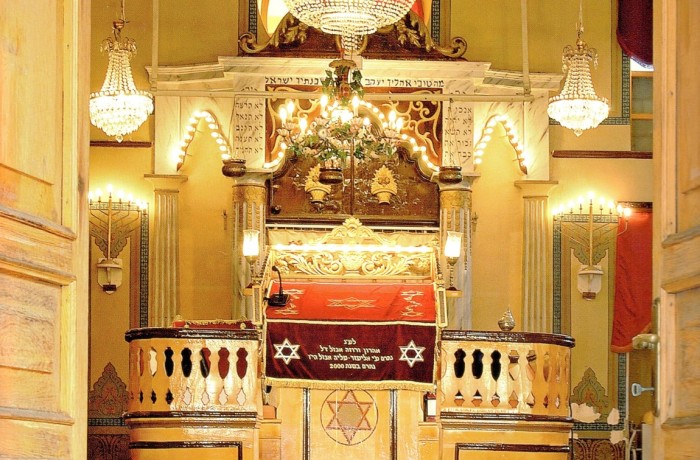
Hasköy Maalem Synagogue is located on the slopes overlooking the Golden Horn near the Hasköy district of Istanbul. It is the only remaining open synagogue in an area that once had many Jewish residents. It is open for worship. The tevah (bimah) is shaped like the prow of a ship, like Ahrida Synagogue. Because of the bombings at Neve Shalom and Şişli Synagogue in 2003, the Maalem Synagogue was closed for a time for security reasons. After completing the necessary security improvements, the synagogue was reopened for prayers in 2007.
Hemdat Israel Synagogue in Haydarpaya (1899)
The Hemdat Israel Synagogue was built in 1899 as a result of the increasing the needs of the Jewish community in the district of Haydarpaşa and Kadıköy, on the Asian side of Istanbul. Though there was an obstruction from Greeks against building a synagogue, Sultan Abdülhamid II sent a troop from Selimiye Barracks to guard the construction of the synagogue. In 2000, a big celebration was held on the occasion of its 100th anniversary.
Hesed Bet Avraam Synagogue in Sirkeci (1920)
This synagogue was built behind the Sirkeci train station, to accommodate the needs of Jews who worked for the railways. The name was derived from the founder, Hesed Bet Avraam. The synagogue has been restored several times
Hesed le Avraam Synagogue in Büyükada (1904)
The synagogue was built at the beginning of the 20th century on Büyükada (the Big Island) and was opened for services in 1904. The name of the synagogue was derived from Avraam Aslan Efendi Fresko, who donated the land to the Jewish community. The plan of the synagogue was drawn by the famous architect Gabriele Tedoshi. Currently, it is open to visitors and worshipers during summer time.
Kal de los Frankos Synagogue in Galata (1860)
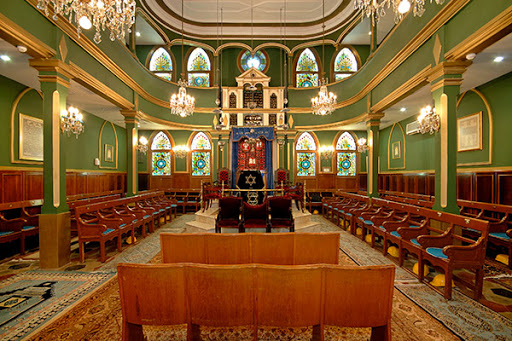
This synagogue, called Kal de Los Francos, was first constructed in the Karaköy district by the community of Spanish and Portuguese Jews (Comunita Israelitico-Straniera di Rito Spagnuolo Portoghese di Constantinopoli), which was established under the auspices of the Italian king in 1862. After moving to its present location, the synagogue was restored in the 1990s. Saturday concerts of the Naflirim Choir had been held in this synagogue until 1922. Currently, the synagogue is only open for special days.
İstipol Salma Tomruk Synagogue in Balat (17th century)
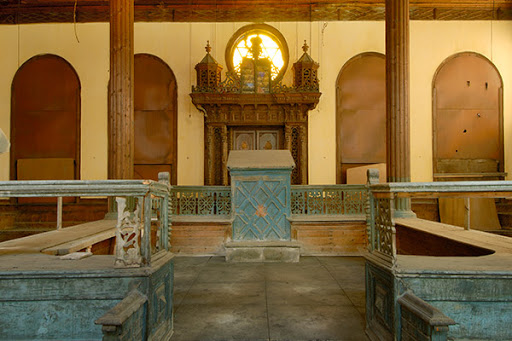
According to the Ottoman document dated 21 May 1693, the İstipol synagogue, called “Estipol” or “Semra Tomruk”, was built before the conquest of Constantinople. The name of “İstipol” derived from the town “İchtip” in Macedonia, from where a Jewish community came to Istanbul. The synagogue burned down in 1896, along with forty-five houses in the neighborhood, and was restored in 1898.
Kal Kadoş Çorapcı Han Synagogue in Sirkeci (1880s)
The synagogue in the historical Çorapçı Han, which belongs to the Kaptan-ı Derya Piyale Paşa Foundation, was built in the 1880s by Russian Jews with the financial support of Count de Kamondo. The synagogue was restored several times, in 1940s, 1952, and 1985. It is open for worship during weekdays.
Kal Kadoş Galata-Zülfaris Synagogue in Karaköy (17th century)
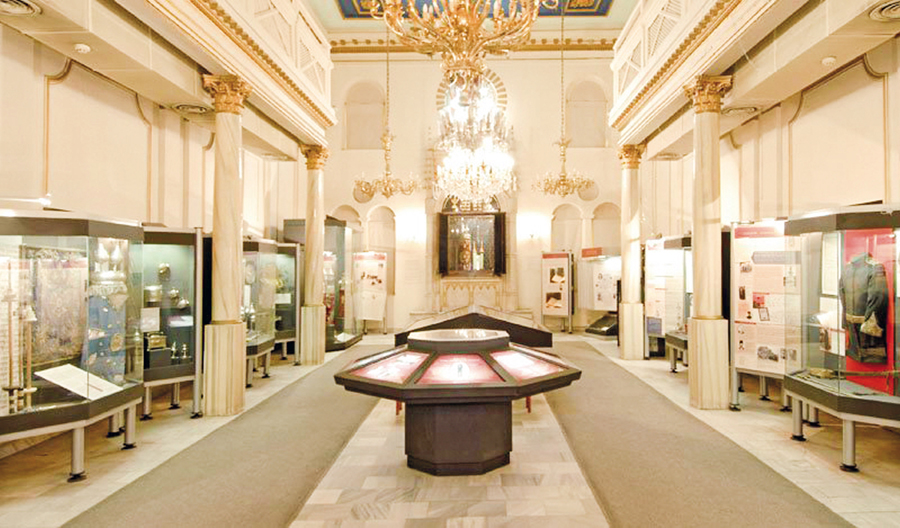
According to a rabbinic document, the “Kal Kadoş Galata” Synagogue already existed in this location in 1671. Today’s building was built on the same land in 1823. The synagogue is also called “Zulfaris,” which is thought to be derived from the street name “Zülf-ü Arus,” a Persian word meaning “the fringe of a bride.” The synagogue was restored several times from the end of the 19th century through the 20th century. It was converted to an art center within the Doktor Marküs Culture and Art Association, and restored by The Quincentenial Foundation in 2001. Today, it serves as the Quincentenial Foundation Museum of Turkish Jews.
Neve Shalom Synagogue in Galata (1951)
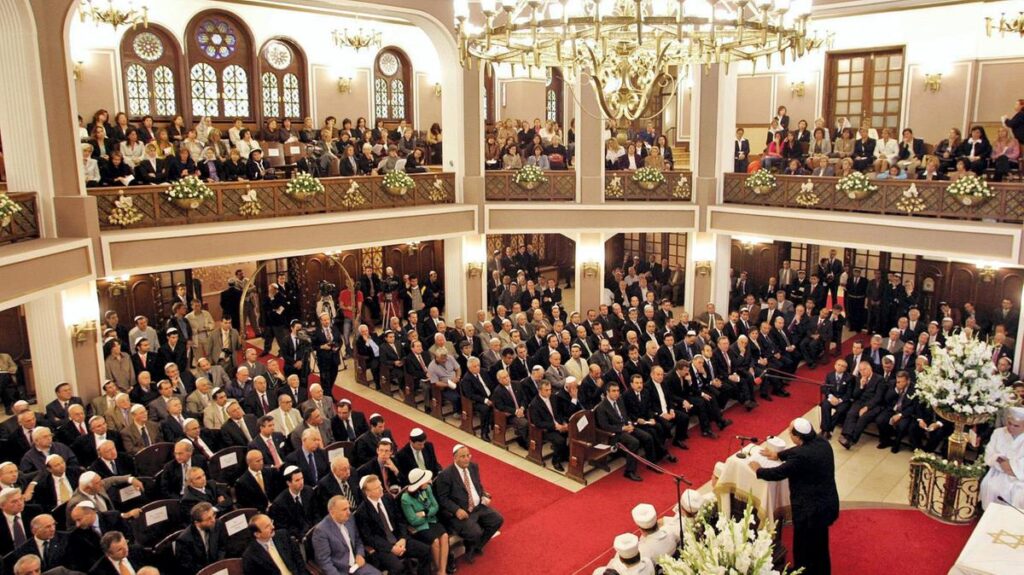
Neve Shalom Synagogue, the central and largest Sephardic synagogue in Istanbul, is situated in Karaköy. The construction project was begun in response to an increase in the Jewish population in the old Galata district in the late 1930s. It was opened on Sunday, March 25, 1951. In 1994, the primary school located adjacent to the synagogue was moved to its new location in Ulus, and the vacant building was transformed into the Neve Shalom Cultural Center in 1998.
Ohel Yaakov Synagogue in Burgazada (1968)
This synagogue was built in 1968 for the increasing needs of the Jewish community in Burgaz Island. The name of the synagogue means “the tent of Yaakov,” and comes from Yaakov Mazon, who contributed to the founding of the synagogue. It belongs to the Neve Shalom Synagogue Foundation, and is open for services only in the summer season.
Tiferet Israel Synagogue in Yeniköy (1870s)
The Yeniköy Synagogue was built with the support of the Kamondo Family in the 1870s, and restored in 1957. The interior of the synagogue was totally refurnished in 2000 and open to the Jewish community in the districts of Yeniköy, Tarabya, and İstinye in 2001 with the name of “Tiferet Israel Synagogue.”
Yanbol Synagogue in Balat (19th century)
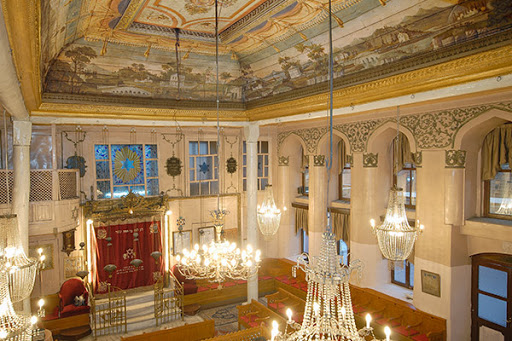
Originally built by Romaniote Jews during the Byzantine time, Yanbol synagogue was later used by the Jewish community that immigrated to Istanbul from the town of Yanbol in Bulgaria. The main building is made of wood. The ceiling of the main prayer hall is decorated with landscape oil paintings. This ceiling was reconstructed in 1895 after the big fire in Balat. The synagogue has been restored many times throughout its history. It is now open only on major holidays and for some Shabbat services. The Ehal is reached by three small steps, and decorated with mother of pearl. The Women’s section, the Azara, is placed on top of wooden columns and is located on the north side of the synagogue. During the restoration of the Ahrida synagogue, the services were held in the Yanbol synagogue.
Yüksekkaldırım Ashkenazi Synagogue in Galata (1900)

Ashkenazi Jews emigrated from Europe to the Ottoman territories at the end of the 14th century. According to the book Die Juden der Türkei by David Trietsch, the population of Ashkenazi Jews in Istanbul in the mid-1920s was more than 11,000. Today, the number of their population is under 700. In the 20th century, there were three Ashkenazi synagogues in Istanbul: Or Hadash Synagogue was closed, and Tofte Begadim Synagogue was converted to the Schneidertempel Art Center. The third, the Yüksekkaldırım Ashkenazi Synagogue, is located near the Galata Tower. After the original synagogue burned down in 1866, a new one was built and opened by Jews of Austrian origin in 1900. Currently, it is only active and open to visitors and prayer.
How to Visit Sinagogues?
To visit the synagogues in Istanbul, a prior registration and special permission from the Chief Rabbinate is required . It is best to make a reservation a few weeks prior to the planned visit using the contact form, which you can find on the website of the Chief Rabbinate A copy of your identity card or passport is required during the procedure. Be sure to bring them with you on the day of your visit. The time and day of your visit are given by the rabbinate after approval.










